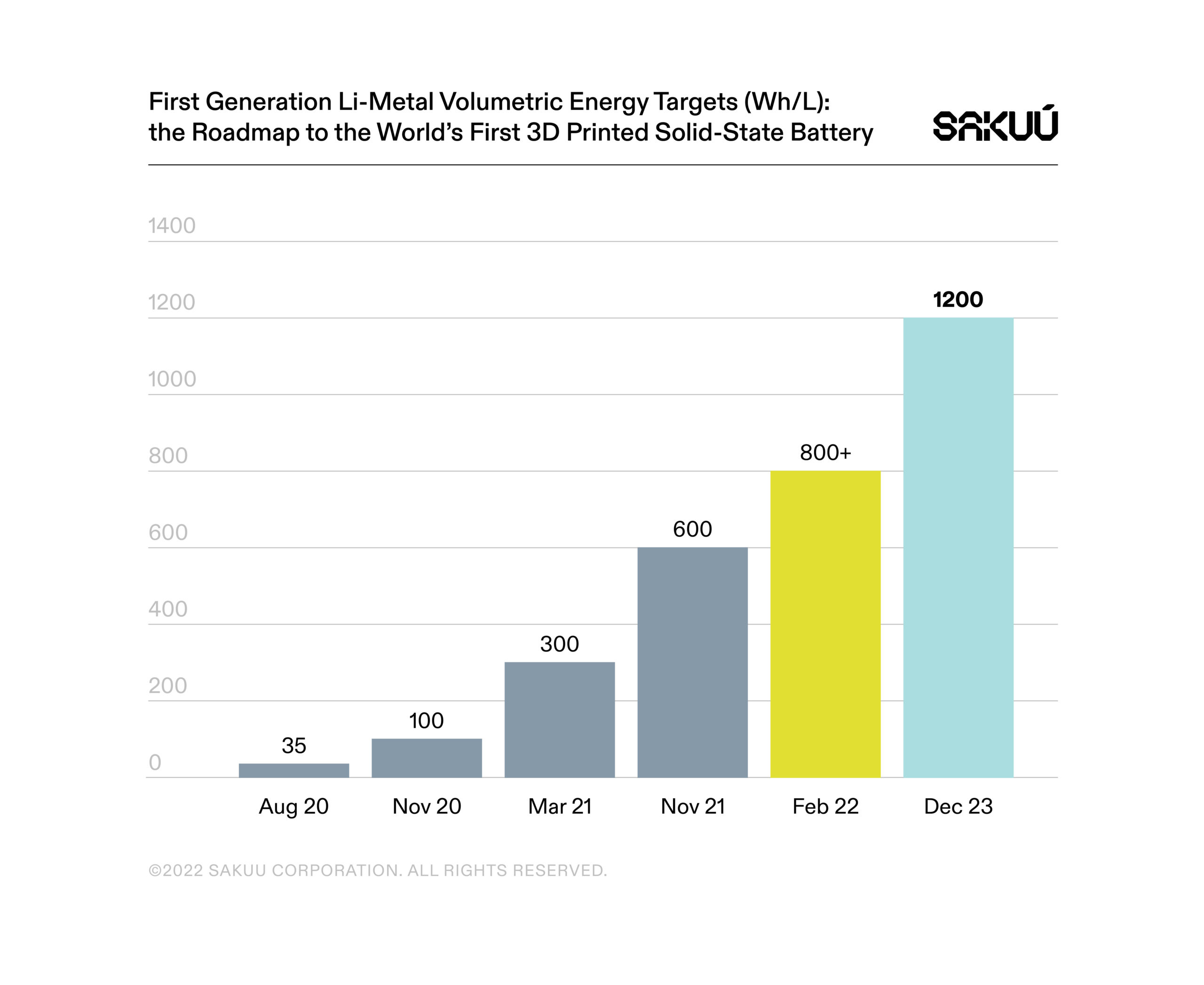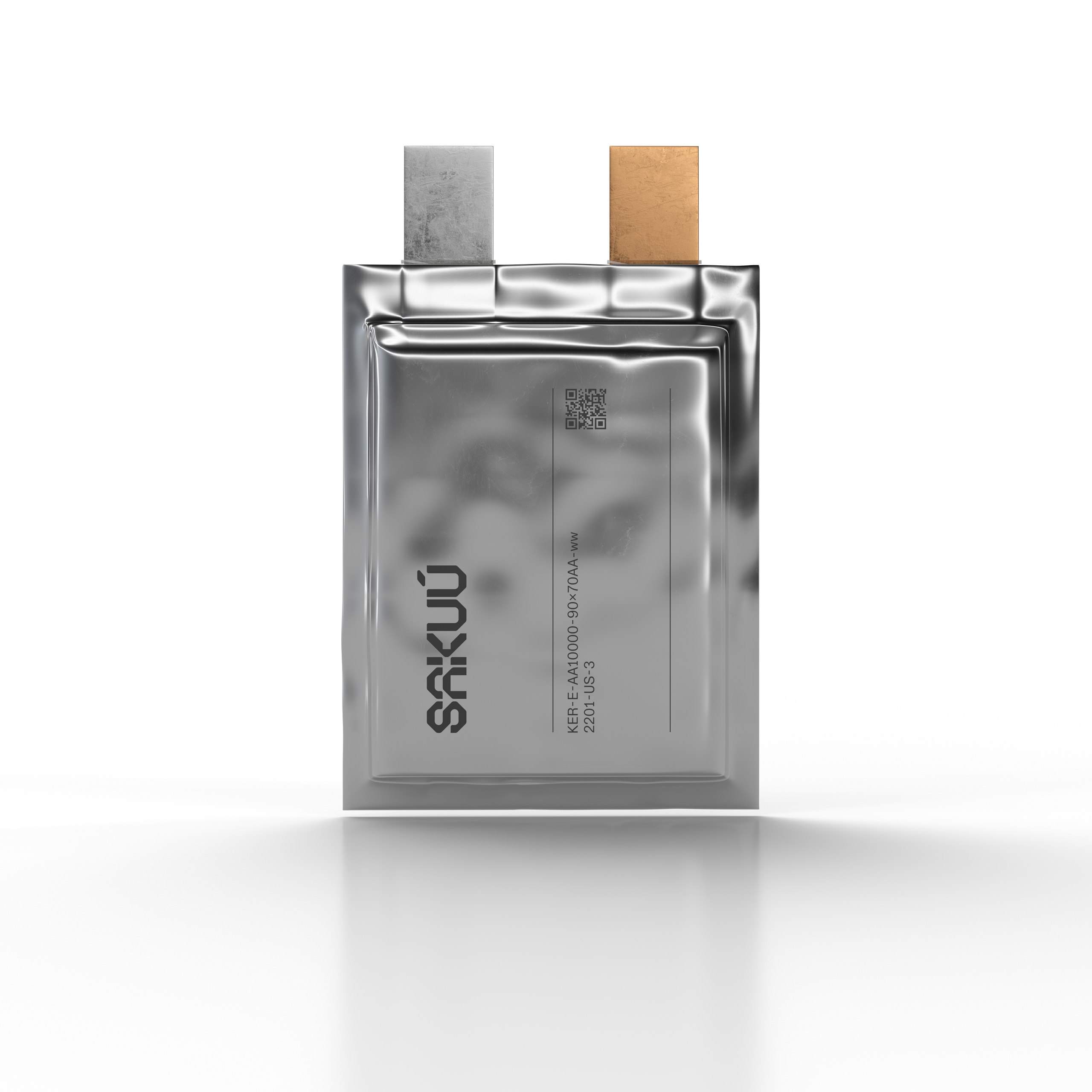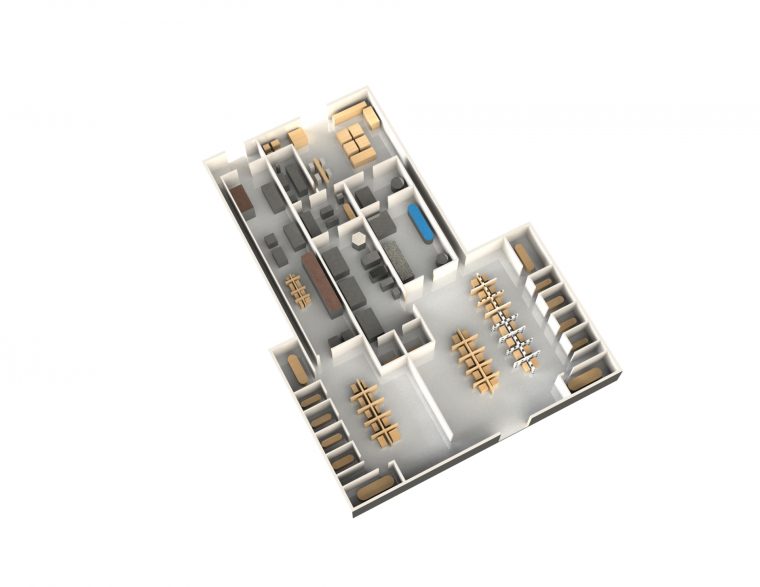Bay Area startup Sakuu is on track to kick off its battery 3D printing factory. The company has achieved a new benchmark in energy density for its lithium battery concept. The battery, which was not 3D printed, has an energy density of 800 Wh/L, on par with batteries in mass produced electric vehicles (EVs), which range from 500-700 Wh/L. With this milestone achieved, Sakuu believes that it is on track to 3D printing solid-state batteries with over 1200 Wh/L by 2023.
The first-generation lithium-metal battery not only has an energy density of 800 Wh/L, but it retains a high energy retention of 97 percent after 200 cycles. The company expects a record 80% retention at 800 complete cycles, while remaining dendrite free. Lithium dendrites are the microstructures that form on the negative electrode during charging and thought to cause many of the shorts that result in the fires that plagued both Samsun Galaxy Note 7 phones and Tesla EVs.
For comparison of Sakku’s technology, the new ONE battery pack for the Tesla Model S, featuring a Nickel-Cobalt-Manganese cathode and a graphite anode, has an energy density of just 416 Wh/L, while its predecessor only achieved 245 Wh/L. Tesla batteries, as of 2021, were estimated to degrade at a rate of roughly 1 percent per 80 cycles, which would bring it to an energy retention of about 97.5 percent after 200. In other words, the energy retention rate of Sakuu’s lithium battery is on par with that of Tesla with nearly twice the energy density.
“The arrival of a safe, sustainable, and high-performance SSB, manufactured with a totally novel 3D printing method can solve critical supply chain and safety issues while moving beyond limitations of todayʼs lithium-ion batteries,” said Robert Bagheri, Founder and CEO of Sakuu. “We are on track to develop that ʻholy grailʼ solid-state battery by 2023, and this first-generation benchmark is a validating accomplishment on the roadmap to significantly better batteries. We are creating a line of safe, customizable, low-cost and high-performance batteries, and manufacturing them in a completely transformative and sustainable manner to satisfy large-scale global demand.”
The startup believes that the potential for its batteries will only grow when it creates its second-generation fully printed solid state battery (SSB), samples of which will begin delivery in early 2023. Sakuu believes that, with its Kavian 3D printing platform, it will be able to quickly mass produce batteries in gigafactory settings, necessary for meeting global demand at a large scale and low cost.
Those who have been following our reporting on battery 3D printing technology may note some skepticism related to the technology. To help gain a better understanding of the reality of situation, we spoke to Dave Pederson, VP of Business Development for Sakuu. Pederson appreciated our wariness, as he receives similar attitudes both from the 3D printing world and the battery world. For that reason, he says that he attempts to be transparent about the technology, offering the phrase “cautious optimism” with how we might view the future of battery 3D printing.
“Quite frankly, every meeting I have kind of starts off [with that skepticism]. We’ve got 40 to 50 years of collective experience in additive manufacturing with ceramics and metals. What we’ve done is we’ve created a technology that lets you put multiple materials using multiple processes in the same platform. That enables you to print the materials in you need for a solid-state battery and subsequently create the battery using the platform,” Pederson said.
Over the past five years, the company has been both developing the 3D printing platform to produce the battery while also developing the battery chemistry. The 3D printer itself is still not a single contained platform, which is something Sakuu is in the process of completing with design and development partners that are assisting in the construction of the machine itself.
At the same time, Sakuu is continuing to release proof points, showcasing where it is on its development roadmap. Using its pilot line, currently under development with Relevant Industrial and Honeywell Process Solutions, the firm was able to produce this first generation of battery. The battery was made with about 80 percent conventional battery manufacturing technology combined with the startup’s proprietary methodologies. This allows Sakuu to achieve greater energy density without the danger of flammability.
“So, yes, it can warrant skepticism from a scalability and technology perspective,” Pederson said. “Hence, the announcement we’re making on our gen one, which is not printed. That’s been a result of our battery chemists working on aspects of the chemistry that’ll ultimately end up in the printed battery,” he continued.
Once the pilot line is complete and able to manufacture battery samples for its partners and customers in 2023, Sakuu will be on track to mass manufacture SSBs at scale. This will include 3D printing the batteries, which, due to the ability to use only the material necessary, should open up material savings, reduced size, and increased energy density.
Given the disparity between hype and reality in our industry and tech at large, it seems safe to always approach new technologies with a cautious eye. However, as we’ve looked at fellow battery 3D printing firm, Blackstone Resources, we’ve learned that there does seem to be a “there” there. And just as is apparent with Blackstone, Sakuu has notable partners that further establish its credibility. This includes lead investor Musashi Seimitsu Industry Co., Ltd., an auto parts manufacturer; Indian auto company Modern Automotives; and a relatively new venture capital firm called Candou Ventures.
It also has a substantial team. On its board is Hassane El-Khoury, who currently serves as president and CEO of onsemi (Nasdaq: ON), a large U.S. semiconductor supplier with nearly $5.9 billion in revenue as of 2018. Sakuu’s chief technology officer, Karl Littau, was Director of Technology at Applied Materials before working at Xerox’s Palo Alto Research Center. The General Manager of Sakuu’s Battery business unit, Arwed Niestroj, worked at Mercedes Benz for over a decade, last serving as CEO of Mercedes-Benz Research and Development in North America.
With that in mind, it sounds as though the company has created the necessary team to drive its 3D printing technology forward. As discussed in a previous interview with Pederson, the applications aren’t limited to the energy sector but could be disruptive to industries like medical and beyond. However, its potential in batteries alone is enough to cheer the startup on. Given the dire need to shift from fossil fuels to some form of renewable energy and Sakuu’s potential ability to recycle lithium batteries, this could be the technology that makes a more sustainable future possible.
Subscribe to Our Email Newsletter
Stay up-to-date on all the latest news from the 3D printing industry and receive information and offers from third party vendors.
You May Also Like
3D Printed Heat Spreader Could Improve Efficiency of Electronics
The low-hanging fruit for decarbonization has long been improving the efficiency of existing systems, hence the justification for LED lights and ENERGY STAR certified appliances. While such minor moves are...
3D Printing News Unpeeled: Marine Gearboxes, 3D Printed Motors and $1.7 Million in Seed Funding
UK based Equipmake just released their Ampere-220 e-axle system. The system, which is meant for high performance electric cars, was similar to one released on the Ariel HIPERCAR. It has...
CEAD Unveils 36-Meter-Long 3D Printer for Abu Dhabi’s Al Seer Marine
CEAD, a Dutch original equipment manufacturer dedicated to large-format 3D printers, has unveiled what it claims to be the world’s largest robotic arm-based 3D printer. At 36 meters long and...
3D Printed Biocomposites Could Help Reduce Marine Plastic Pollution
Concerns about the impact of plastic litter and microplastics in the oceans are at the forefront of environmental study. For decades, the marine environment has suffered from the degradation of...







































